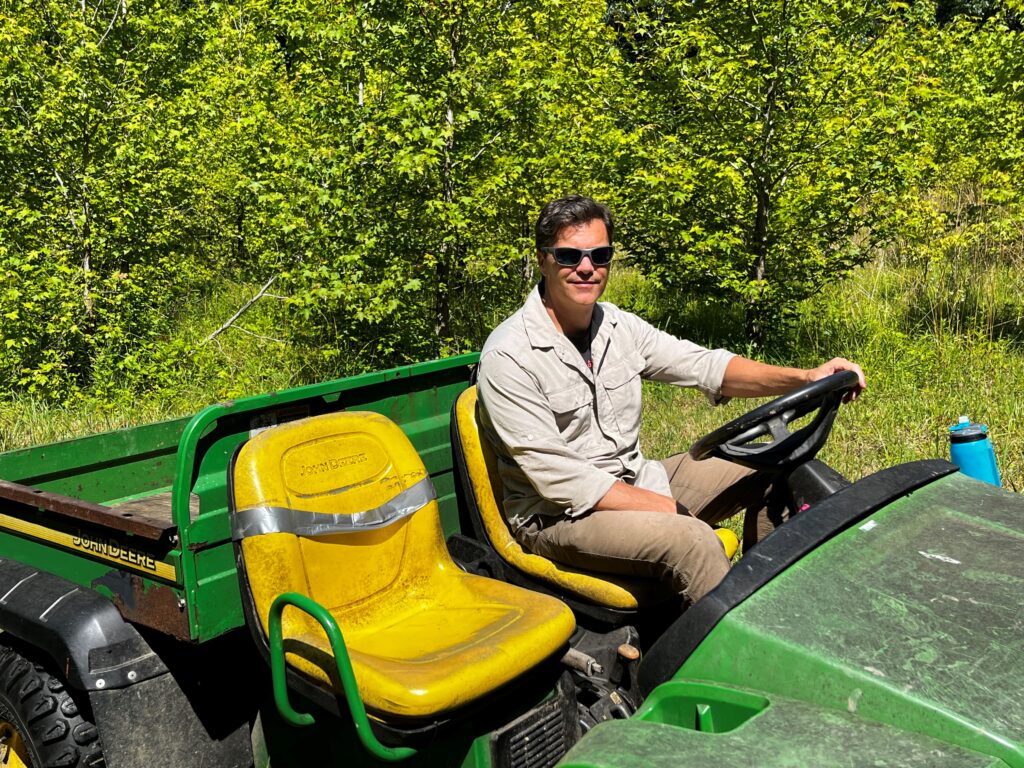by Kristen Goodhue
“Plant it and forget it for 10 years. Nothing interesting happens in young forests.”
John Parker remembers hearing that advice from a colleague who worked in tropical forests. It was the summer of 2012. Parker, a senior scientist at the Smithsonian Environmental Research Center (SERC), was on the verge of planting 20,000 tree saplings on the center’s campus. Once planted, his team would watch a new forest grow from scratch. He hoped the project would continue for at least a century.
“I was pretty worried,” Parker said. The early years were especially rough, as his lab worked to win small grants and recruit interns to help keep it going. “We didn’t forget it,” he said. “We kept the experiment running and collected data. But it was somewhat piecemeal without a big grant to hold it all together.”
Just over a decade later, the 60-acre experiment—BiodiversiTREE—is a thriving mosaic of sycamores, elms, tulip poplars and 13 other tree species. It’s attracted scientists from around the world. Some are former SERC postdocs returning with their students. Others are new collaborators.
Parker now sees the project as a model of “if you build it, they will come.” But building it was tough.
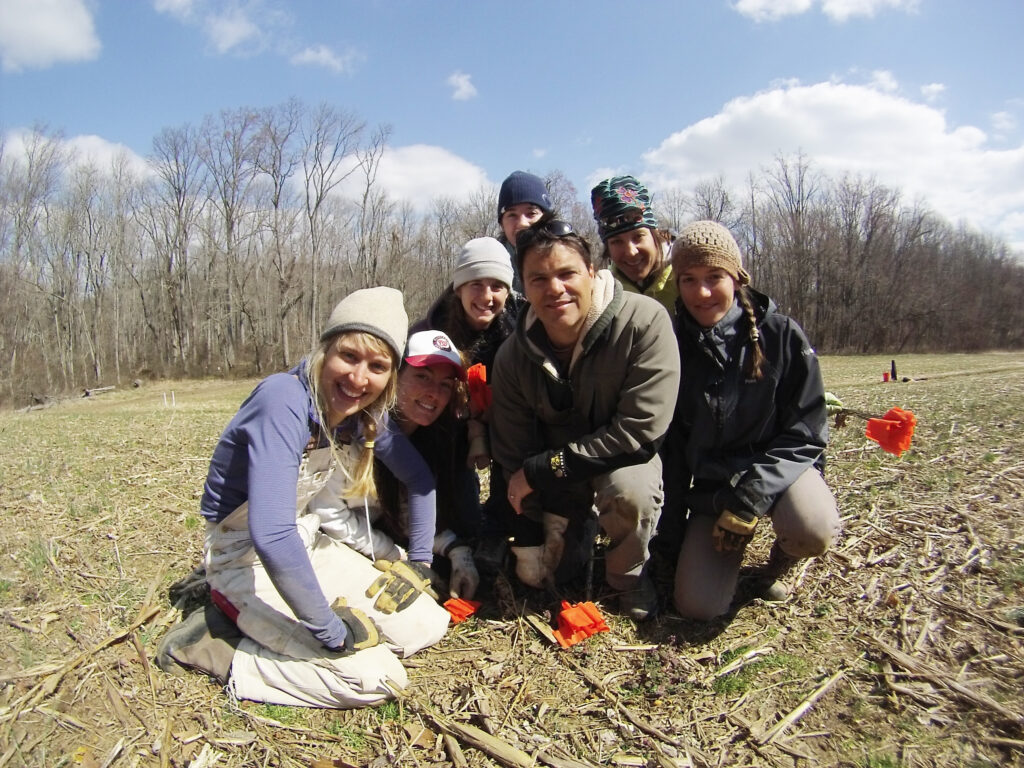
The Constant Gardeners
Nearly every effort to conserve life on land, on some level, depends on trees. They fight climate change, filter pollution and provide habitat. But most tree planting efforts contain just one species. BiodiversiTREE aimed to shake up that paradigm.
The experiment contains 70 “mini-forests”—large plots with one, four or 12 tree species. That setup enables scientists to find out whether a diverse forest offers more benefits than single-species monocultures. An additional five plots were left alone to regrow naturally, revealing what would have happened with no intervention.
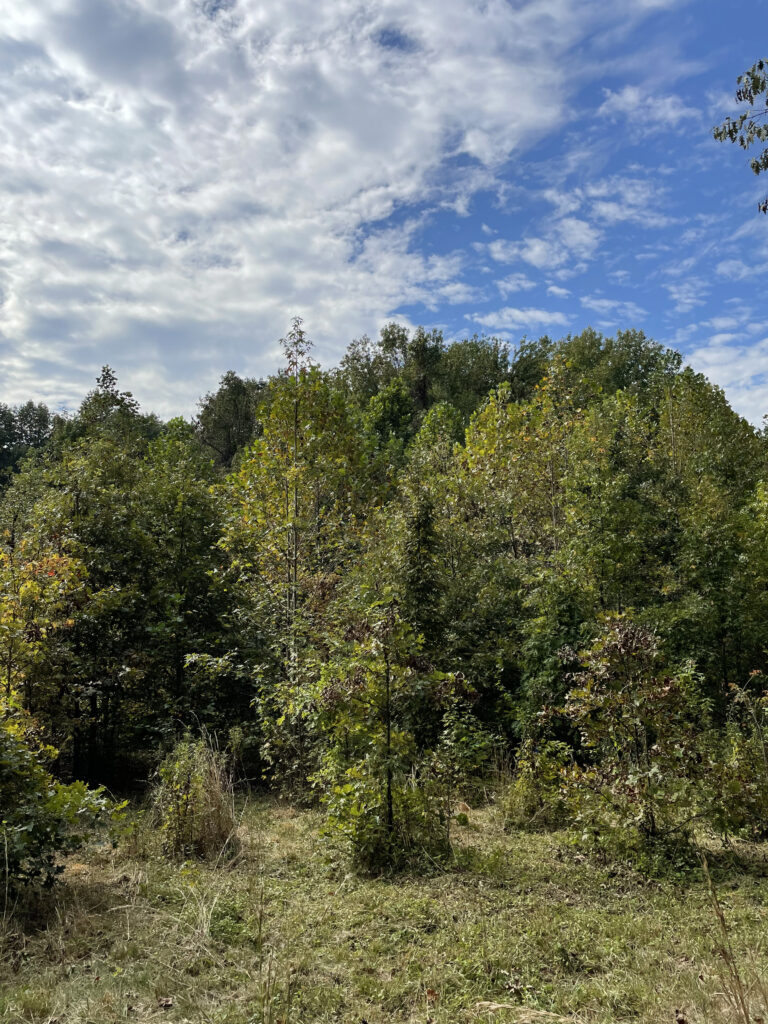
(Photo: Susan Cook-Patton)
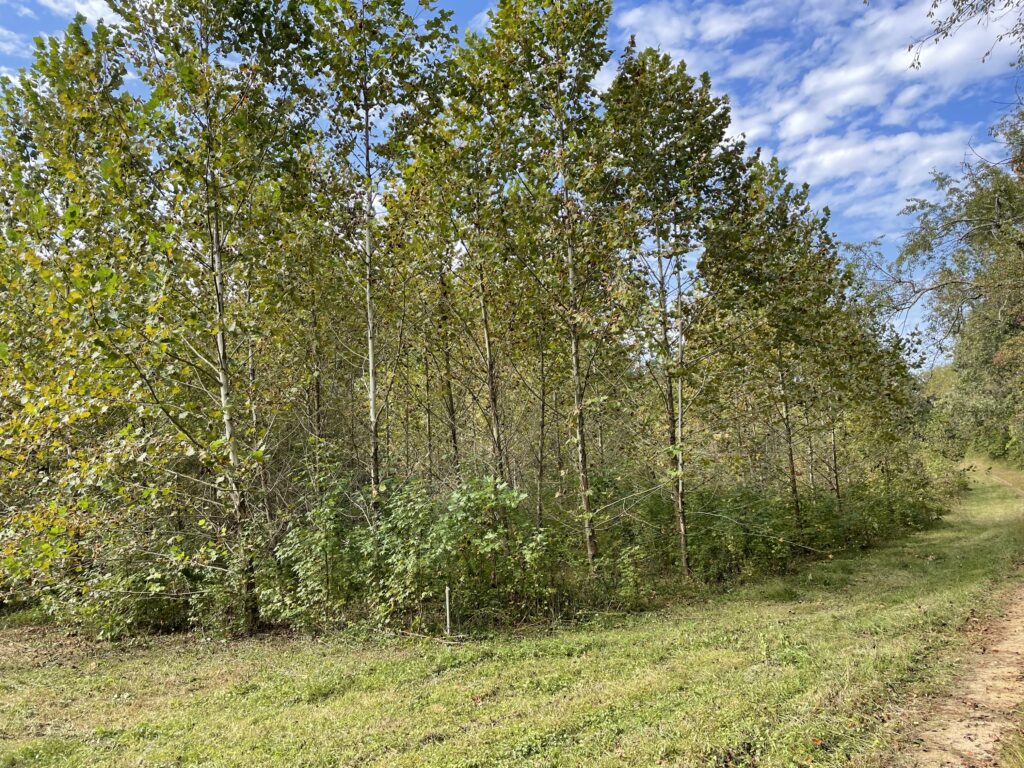
(Photo: Susan Cook-Patton)
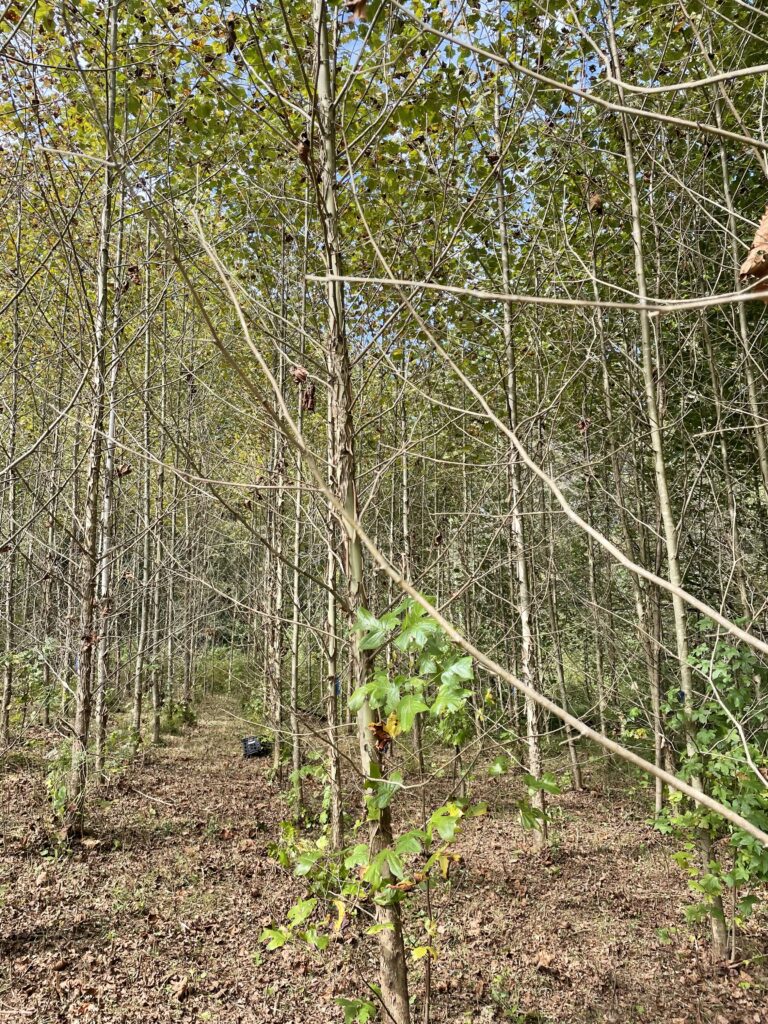
(Photo: Susan Cook-Patton)
Parker secured funding to launch the project from John Kress, the Smithsonian’s then-Under Secretary of Science and Research. In early 2013, nearly 100 volunteers joined Parker and his two staff—postdoc Susan Cook-Patton and project coordinator Whitney Hoot—to plant thousands of saplings. Even with help, the labor was grueling.
“I ended each day practically asleep on top of my dinner plate, after digging holes and hauling trees all day,” Cook-Patton recalled.
Parker’s team still does months of backbreaking labor every year—mowing, weeding and keeping out “volunteer trees” that could throw off the experiment. Sweet gums and tulip poplars would happily take over all the plots, which is a problem for slower-growing species like hickories.
“Keeping the treatments at one, four, 12 is definitely the hardest,” said Jamie Pullen, Parker’s head technician. Without this meticulous maintenance, Pullen and Parker both pointed out, preserving a true diversity experiment would be impossible.
“Probably half of our job is not ‘science.’ It’s just keeping it alive,” Parker said.
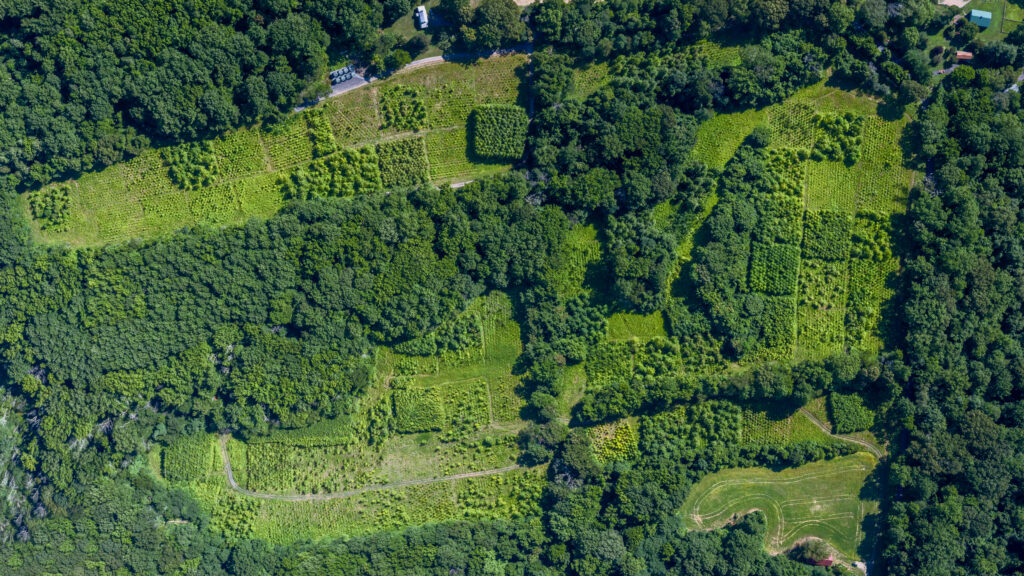
Diversity’s Dividends
Does diversity pay off? Yes—though not always in the ways Parker and his colleagues expected.
Some single-species plots, like sycamores, saw phenomenal growth. Other single-species plots barely got off the ground. Maple saplings shrank before hungry deer. Emerald ash borer reduced the ash trees to dead-looking sticks. In the poorest performing plots—hickory monocultures—a mere one in five trees survived.
However, diverse plots were far less prone to these boom or bust cycles. At least half the trees survived in diverse plots, and some saw survival rates as high as 93%. Parker likens forest diversity to a stock portfolio: It’s about risk management.
Diversity brings other benefits as well: cooler summer temperatures, greater animal diversity and more carbon and water in the soil.
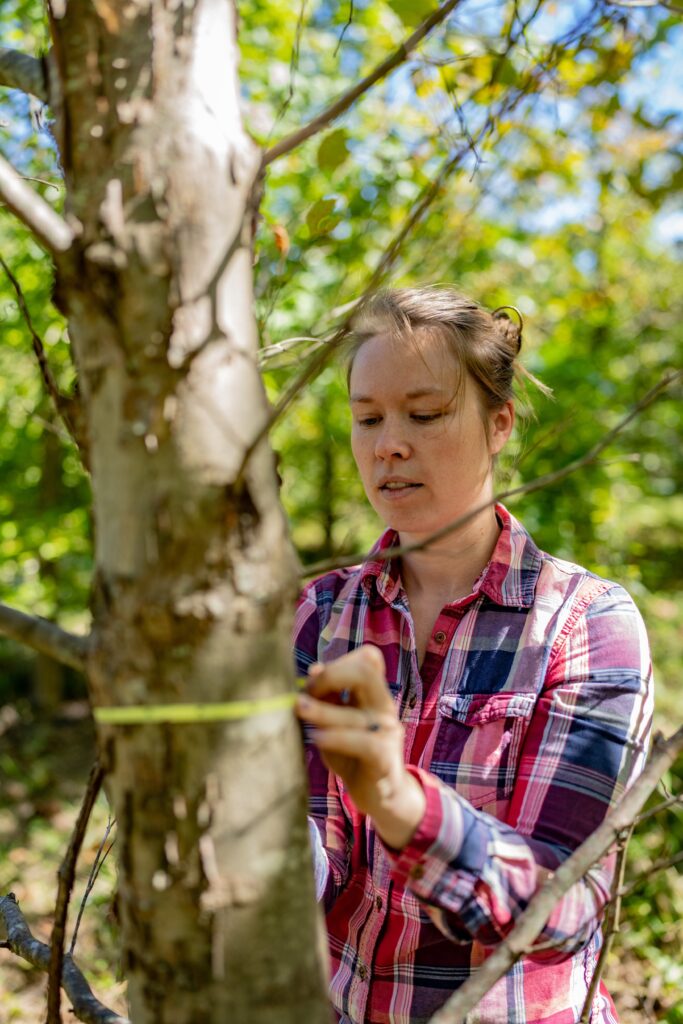
BiodiversiTREE’s second decade is shaping up to be bigger than its first, with two grants from the National Science Foundation. One will examine whether soil fungi can influence tree growth and carbon storage by comparing soil microbes in BiodiversiTREE to soil microbes in forests across the continental U.S.
“We’re going to use our work here at SERC to in a sense ground truth the entire United States,” said Parker.
The second grant will explore whether soil and leaf microbes in BiodiversiTREE affect enemies attacking the trees, including leaf insects and pathogens.
The “plant it and forget it” idea still rings in Parker’s head occasionally. But after seeing the immense benefits diversity can have even on young forests, he’s relieved he and his team persevered.
“If I’d not done anything for those 10 years, just forgotten about it and kept it alive, and then come in and measured everything, I would have missed a ton of stuff that’s happening,” Parker said.
See how it all began: BiodiversiTREE, The Hundred-Year Forest Experiment (March 25, 2013)
Voices of BiodiversiTREE: Canopy to Roots
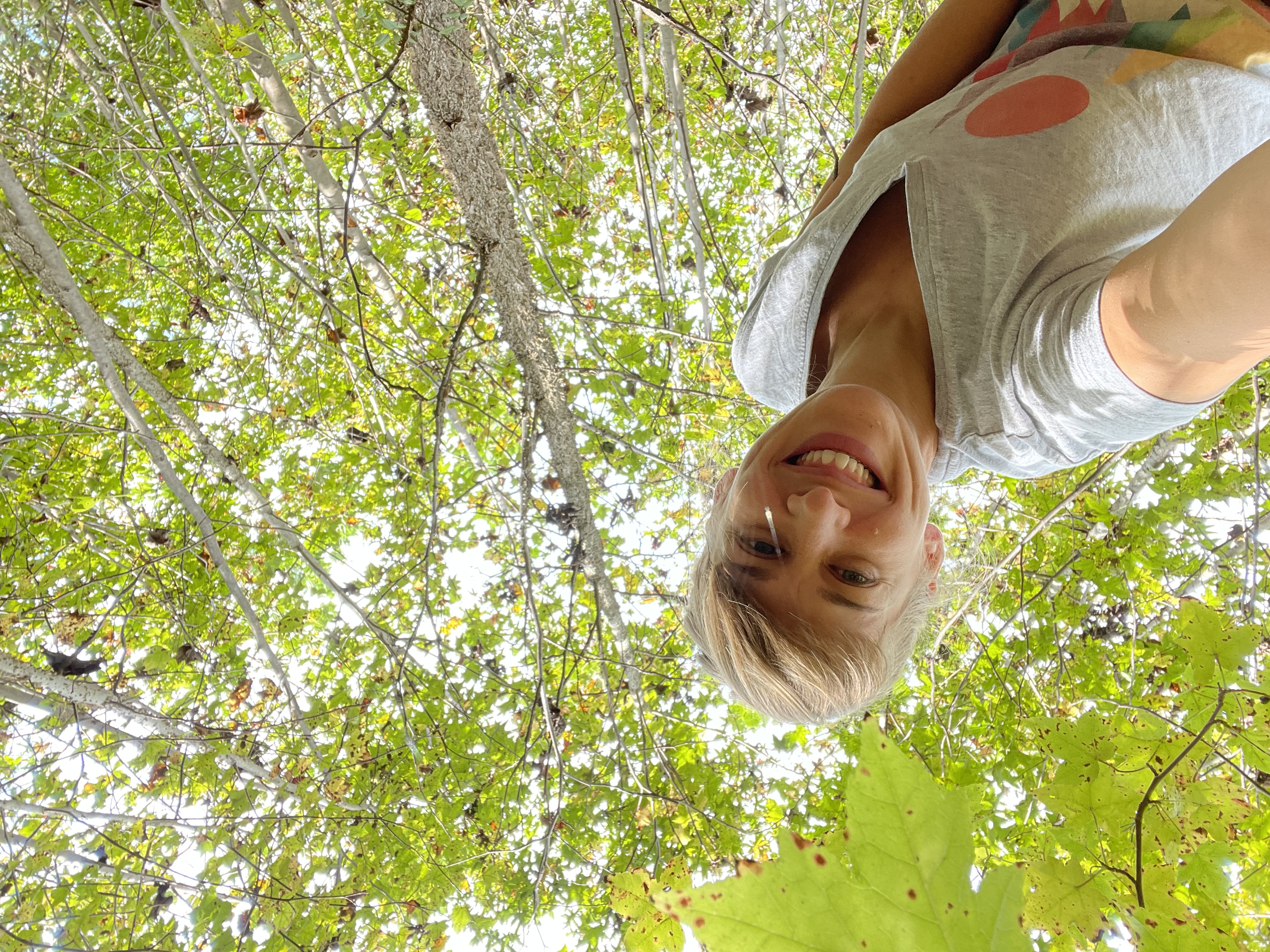
“In my mind’s eye, I can still see the open field filled with corn stubble and tiny saplings. It is such a delight to juxtapose that memory against the real sight of trees stretching ever higher towards the sky.” – Susan Cook-Patton, senior forest restoration scientist at The Nature Conservancy
More than anywhere else in BiodiversiTREE, the forest canopy shows the most striking contrast between diverse and single-species plots. In single-species plots, trees race each other to the top. They grow tall and narrow in their quest for sunlight. However, diverse forests are more likely to contain both shade-tolerant and light-hungry species. Here, trees can grow wide and full. They stretch out their branches, creating shadier, more complex canopies that offer refuge for wildlife. (Photo: Susan Cook-Patton)

“When I got here, there was no shade out here. No shade…Now, I would say we have almost more plots with canopies than without.” – Jamie Pullen, SERC head technician
As the canopies grow, they create their own microclimates within the forest plots. More diverse plots have more moderate temperatures, keeping it cooler in summer and warmer in winter. They also retain more water in the soil and the air. Wildlife feel the differences too, Pullen pointed out. Mosquitoes didn’t used to be a problem in the early years of BiodiversiTREE, when the landscape was uniformly hot and open. Now, the humidity is drawing the insects to diverse forest enclosures. (Photo: Kristen Goodhue/SERC)

“As a scientist…we keep our methods the same to keep everything similar. But it’s challenging when the environment you’re working in is changing. And this forest is definitely changing.” – Karin Burghardt, assistant professor at the University of Maryland
Three years after the trees were in the ground, Karin Burghardt began the first animal studies in BiodiversiTREE. She first searched for caterpillars using trees as host plants, and then branched out to spider predators. Diversity proved to be a boon for spiders, who found refuge in shadier canopies during summer. But caterpillars were, well, complicated. Diverse plots have consistently hosted more caterpillars overall. But the number of caterpillar species using the plots is changing. For the first four years of her project at SERC, Burghardt found more caterpillar species using trees in diverse plots. But in the last two years, caterpillar species in single-species plots have begun to catch up. It’s a testament to how much even a few years’ growth can transform a forest ecosystem. (Photo: Abby Robinson, Univ. of Md.)
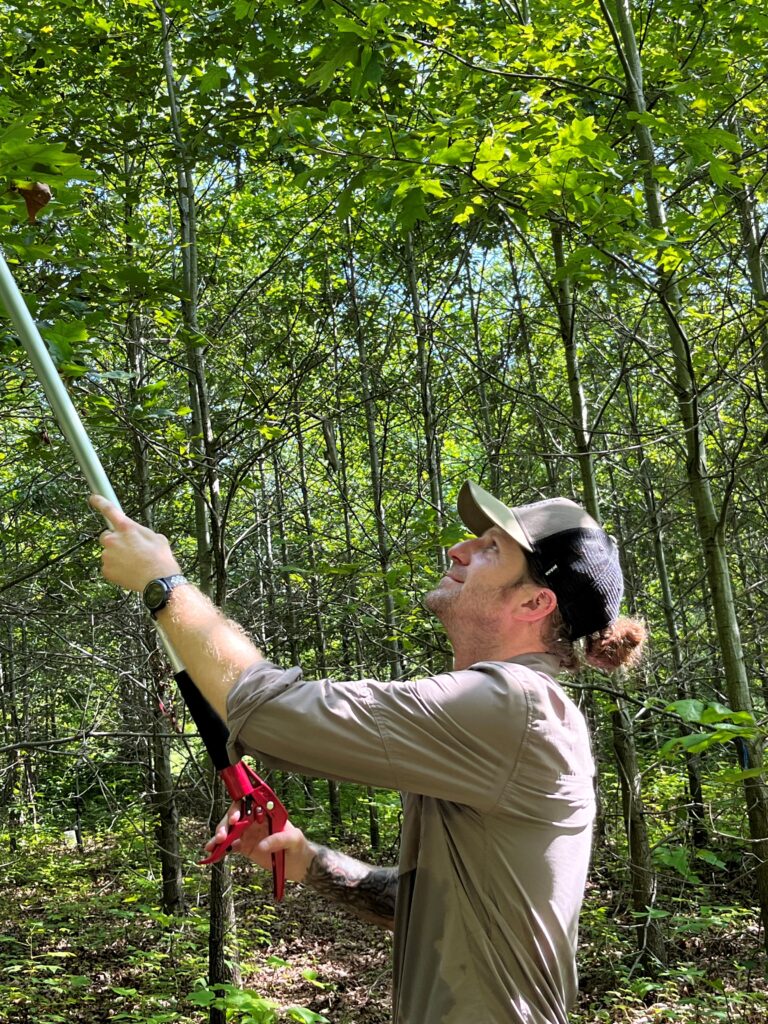
“All trees have a microbiome, just as we do….One of the potential benefits of a diverse forest is that diversity may support healthy microbiomes, which can ultimately help trees to perform better.” – Eric Griffin, Assistant Professor at Warren Wilson College
Eric Griffin studies the bacteria and fungi that live in tree leaves, known as “leaf endophytes.” When he began his research as a SERC postdoc, he expected more diverse tree plots would harbor more diverse fungi. But the opposite proved true. When his team dug deeper, they discovered it was the harmful, disease-causing fungi that were less abundant inside the leaves of diverse plots. Today he has joined four other lead scientists in a National Science Foundation grant to study the larger forest food web, from microbes in the roots, to leaf chemistry, to leaf-eating caterpillars and other insects. (Photo: Kristen Goodhue/SERC)
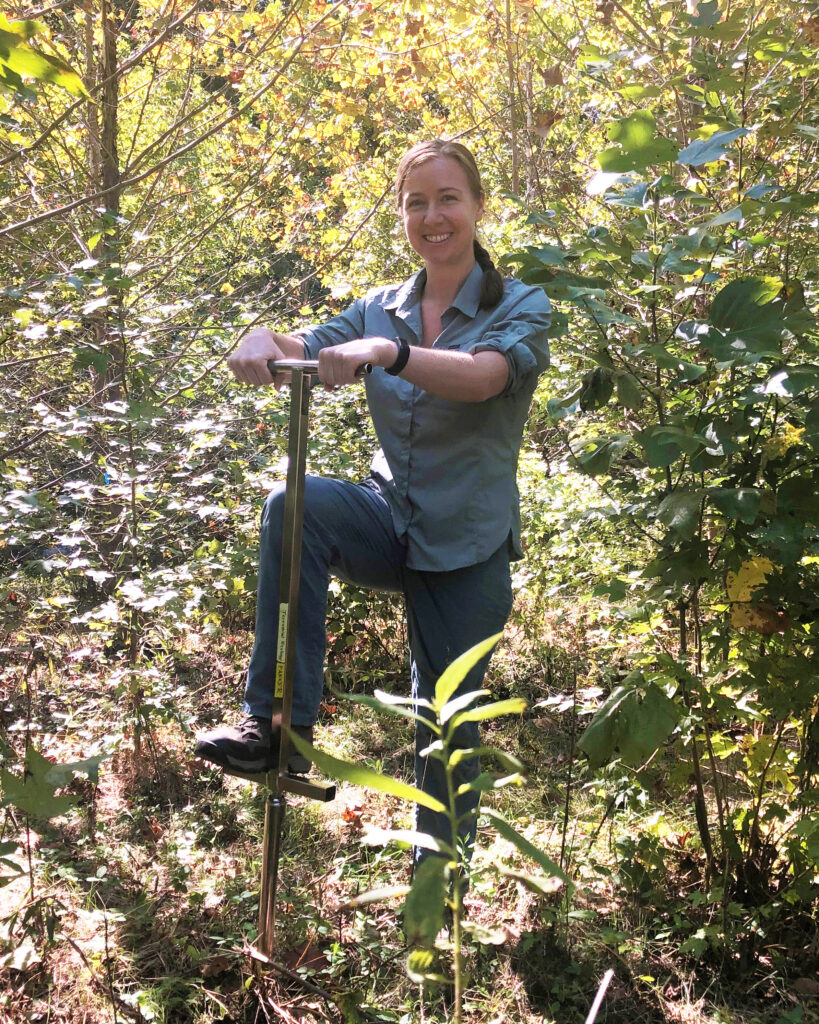
“Lots of stuff focuses on, oh, let’s see how fast we can accumulate aboveground biomass. But there’s the flipside. Soils are really important sinks for carbon.” – Rachel King, postdoctoral fellow, National Center of Ecological Analysis & Synthesis
BiodiversiTREE contains 75 forest plots—and Rachel King has excavated soil cores from all of them. Inside the hundreds of samples she processed during her SERC postdoctoral fellowship, she hunted for carbon. On average, she discovered single-species monocultures were far more likely to lose carbon from their upper soils, especially in the early period right after planting. Meanwhile, the 12-species plots held onto nearly all the carbon in their top layers. The reason is still a mystery. But if fast-growing monocultures trigger a loss of soil carbon at the beginning, that could offer a powerful incentive to plant more diverse restorations. (Photo: Kristen Goodhue/SERC)

